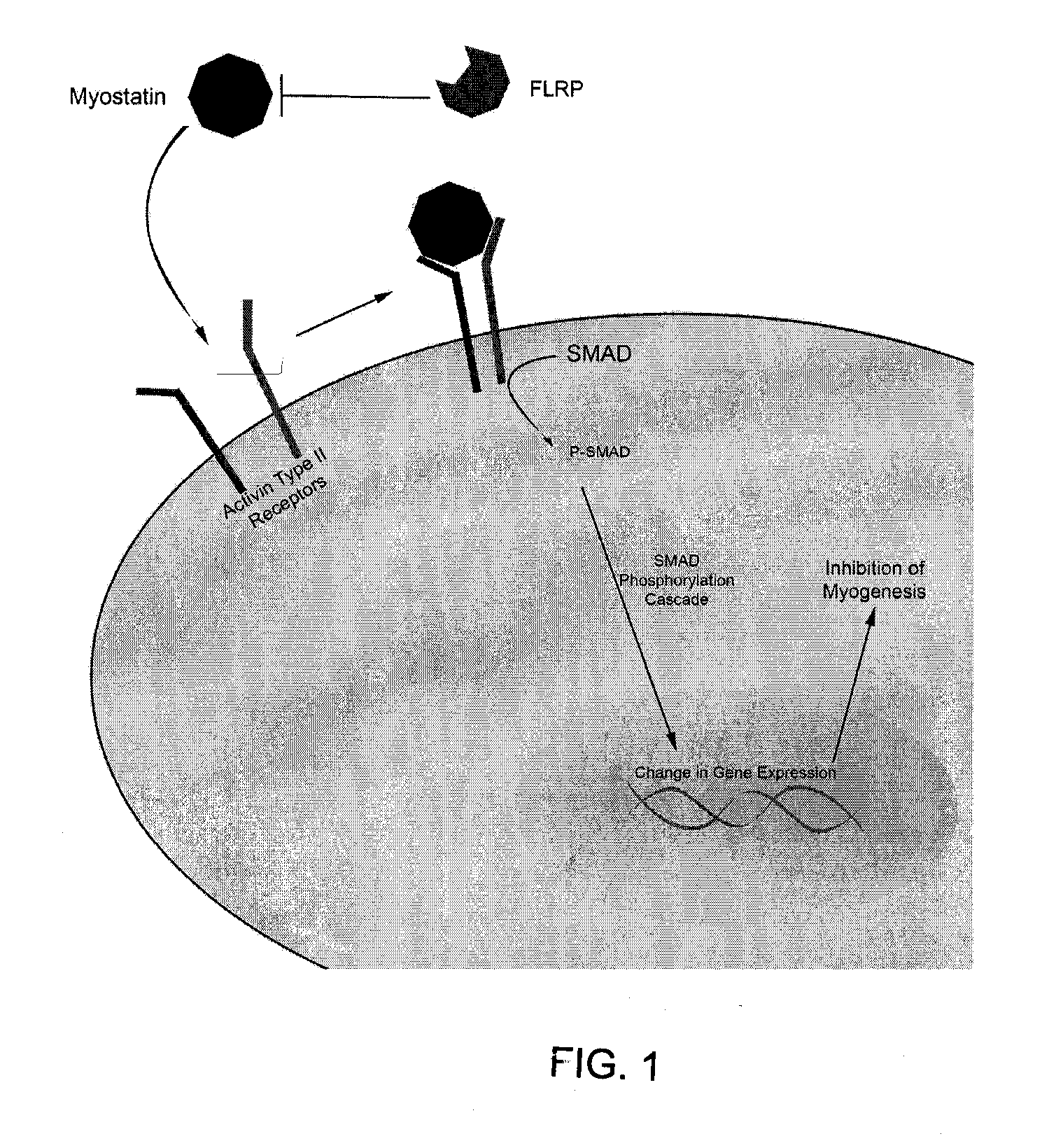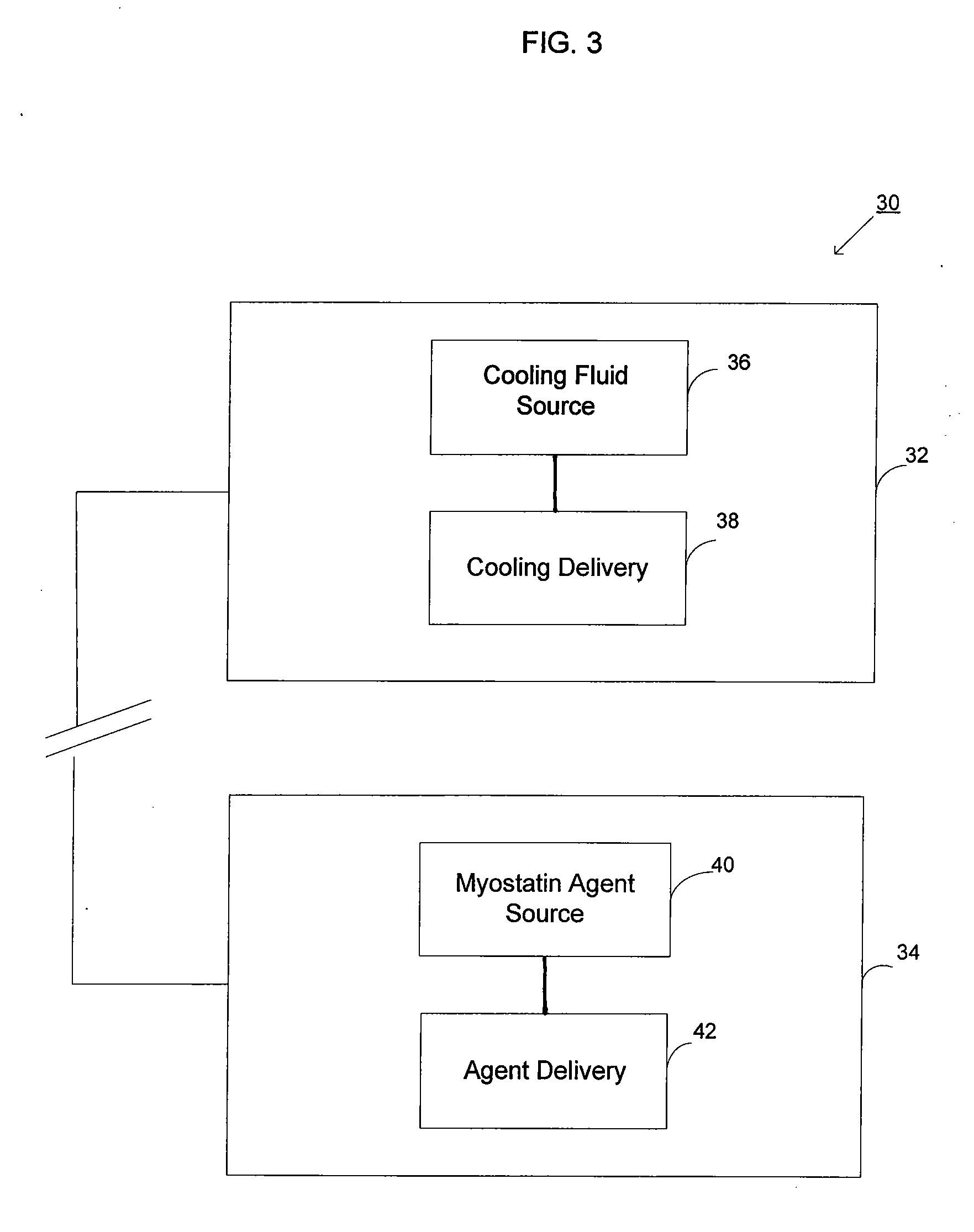Subdermal tissue remodeling using myostatin, methods and related systems
a technology of myostatin and subdermal tissue, applied in the field of medical devices, can solve the problems of undesirable cosmetic features on the skin surface, and achieve the effects of reducing the risk of skin cancer
- Summary
- Abstract
- Description
- Claims
- Application Information
AI Technical Summary
Benefits of technology
Problems solved by technology
Method used
Image
Examples
Embodiment Construction
[0028]As set forth above, the present invention is based at least partially on the discovery that inhibition of myostatin activity in a target tissue can inhibit muscle contractility and / or mass in that tissue and alleviate or treat certain skin features, e.g., cosmetic features or defects, or defects associated with muscle activity and contraction, including certain skin surface alterations, lines or wrinkles. As such, embodiments of the present invention include increasing myostatin activity in a target tissue so as to inhibit the process of myogenesis in the target tissue. Increasing myostatin activity can be accomplished by various methods, such as by delivering a functionally active myostatin peptide to the tissue, which will aid in the reduction of muscle contractility and / or mass. Such increased myostatin activity, according to the present invention, can alleviate certain defects such as surface cosmetic defects, lines, wrinkles, or rhytids, and the like on the skin surface. ...
PUM
| Property | Measurement | Unit |
|---|---|---|
| temperature | aaaaa | aaaaa |
| temperature | aaaaa | aaaaa |
| temperature | aaaaa | aaaaa |
Abstract
Description
Claims
Application Information
 Login to View More
Login to View More - R&D
- Intellectual Property
- Life Sciences
- Materials
- Tech Scout
- Unparalleled Data Quality
- Higher Quality Content
- 60% Fewer Hallucinations
Browse by: Latest US Patents, China's latest patents, Technical Efficacy Thesaurus, Application Domain, Technology Topic, Popular Technical Reports.
© 2025 PatSnap. All rights reserved.Legal|Privacy policy|Modern Slavery Act Transparency Statement|Sitemap|About US| Contact US: help@patsnap.com



